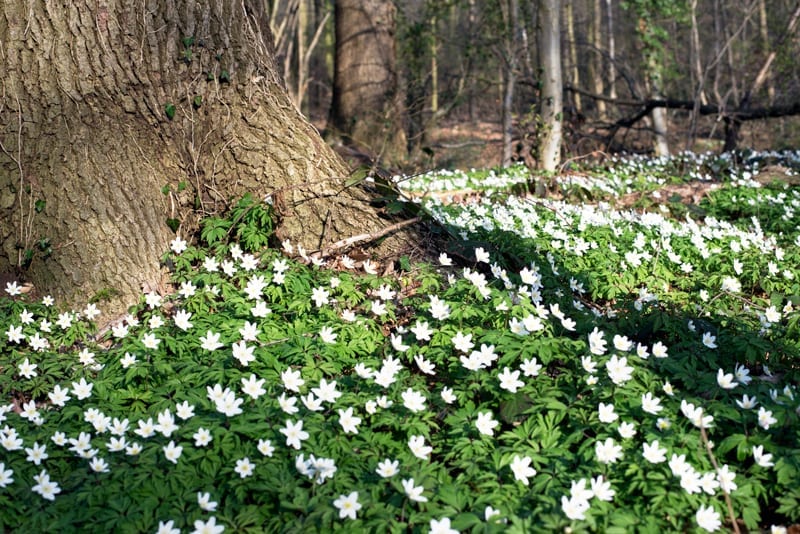There has been a lot of buzz in the last few years about landscaping with native plants. The United States has a serious problem with invasive plant species like kudzu, English ivy, or star-thistle. These plants have been introduced to areas where the native plants simply can’t compete, and they can cause serious harm to local ecosystems. Even if a non-native plant is relatively harmless, the fact that it didn’t evolve in a specific region means it will be very high maintenance when compared to native species. Using native or indigenous plants for New Jersey landscapes is not only beneficial for the environment but also your time.
Here in New Jersey, we have hundreds of native plant species that are not only beautiful, but can also help to conserve our state’s natural landscape while simultaneously saving time and money! But which native plants would be best for your garden? We’ve compiled a sampling of native plant species to get you started, suited for the various light, soil, and water conditions here in New Jersey.
Flowering Plants
Flowers are the crown jewel of any garden. Planting commercially available native plant species with an eye toward spreading out their blooming periods will keep your garden colorful from Spring to Fall. New Jersey has many native flowering plant species, but these are not only eye-catching, they will also attract a variety of different pollinators to your yard.
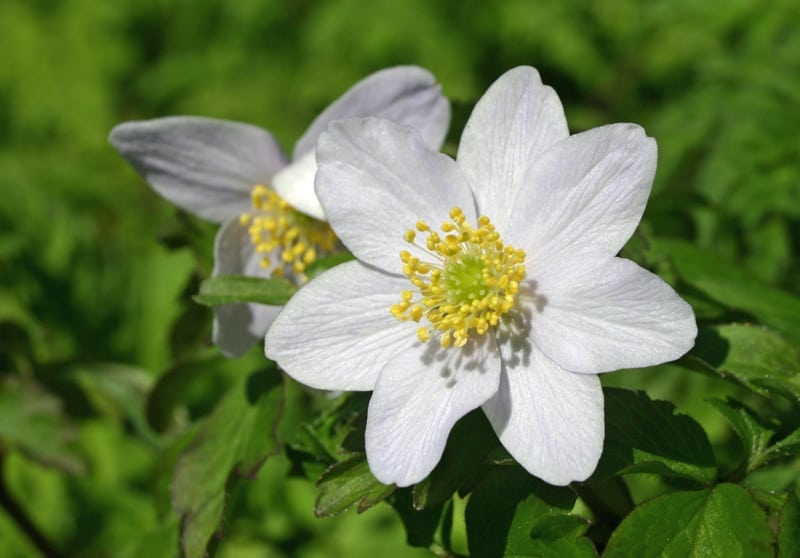
Wood Anemone
A spring ground cover plant, the wood anemone enjoys moist-to-wet soil and shady corners where the sun won’t scorch its leaves.
Blooming from April to May, this perennial will die back in mid-summer, then return the following spring.
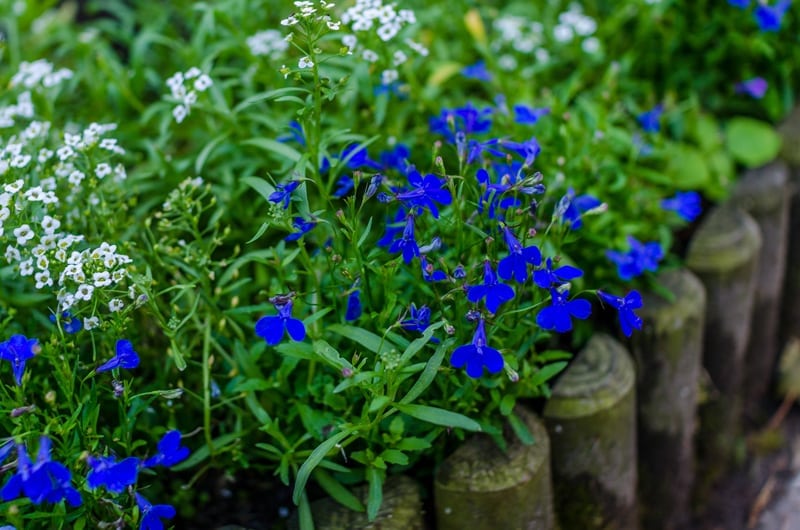
Great Blue Lobelia
Sporting bold, blue flowers and growing to a height of 2-3 feet, the Lobelia will stand out in your landscape. It is also a lover of wet soil but prefers partial sun.
The Lobelia blooms from July to September, after many other flowers have faded, so you can enjoy its color through the early days of fall.
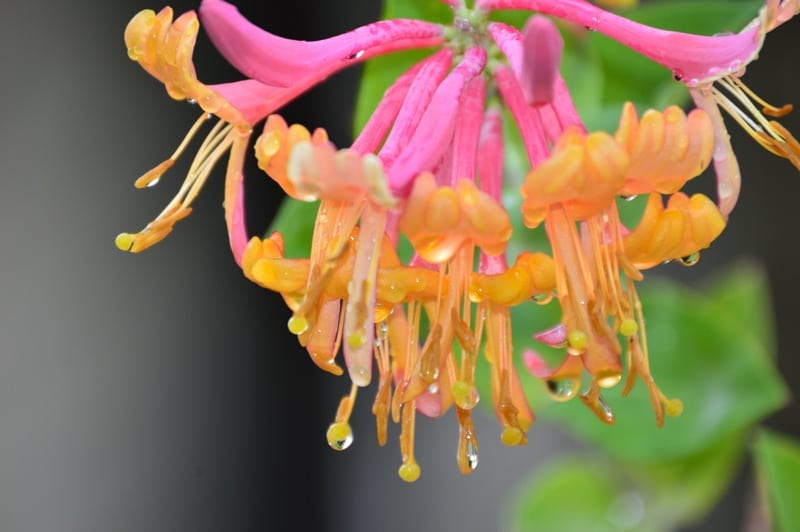
Lonicera sempervirens
Also known as Woodbine, this is a great alternative to the invasive Japanese honeysuckle. Though it doesn’t produce as strong a fragrance, it does boast bright orange blossoms.
The Woodbine loves the full sun and well-drained soil, so it’s perfect for the higher, sandier places in your yard.

Purple Coneflower
This classic garden staple is known for its enchanting purple summer blooms. A bonus: Goldfinches love their seeds!
The purple coneflower is a perennial plant with smooth and sturdy stalks. This flower regrows every year. For the best results, keep it in full sun with lean soil.

Black-Eyed Susan
One of the most popular wildflowers in North America, the Black-Eyed Susan makes a cheerful addition to any landscape. Expect a summer-long sea of yellow and orange when you plant these.
The daisy-like flowers aren’t too fussy. They are happy in many different soil types with full sun.
Shrubs and Bushes
Shrubs, hedges, and bushes form the structure of a landscape, like the walls of a house. Choosing the right shrubs to form the basis of your landscape can be tricky, but it’s not impossible. These options can work in most gardens and landscapes, while also adding interest to your design.
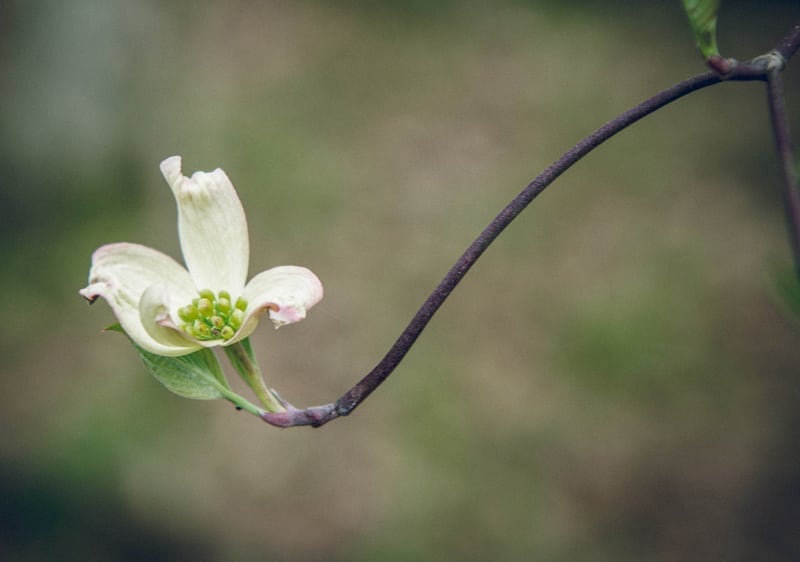
Stiff Dogwood
This species is one that can be tailored to suit your needs. It can be kept small and shrub-like through pruning, or shaped and allowed to grow as a tree. It bears small, white flowers in the spring that attract butterflies, and is specifically host to the Summer Azure Butterfly.
The Stiff Dogwood prefers wet soil and partial shade but can be adapted to drier soils if necessary.
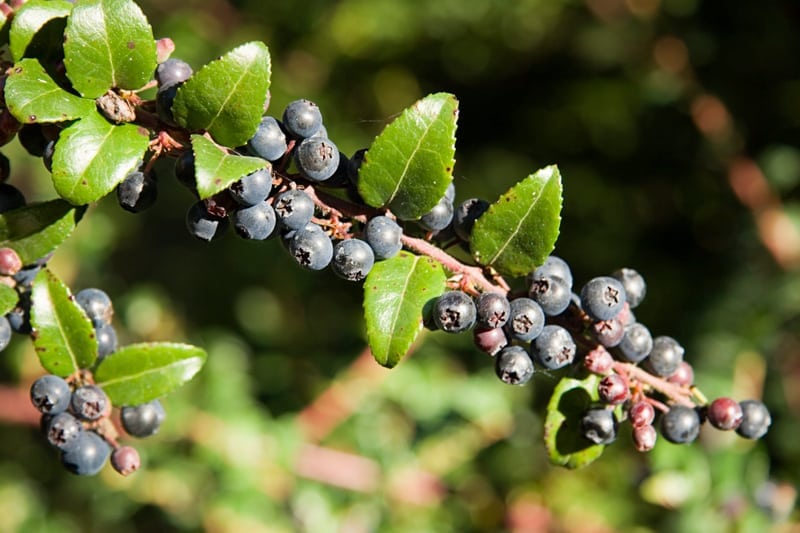
Dwarf Huckleberry
These small bushes are similar to a blueberry, and produce both flowers and small, white-blue fruits. They like sandy soil with good drainage and have low water requirements. Preferring partial shade,
Dwarf Huckleberry shrubs can easily fill in the corners of a shady flower bed.
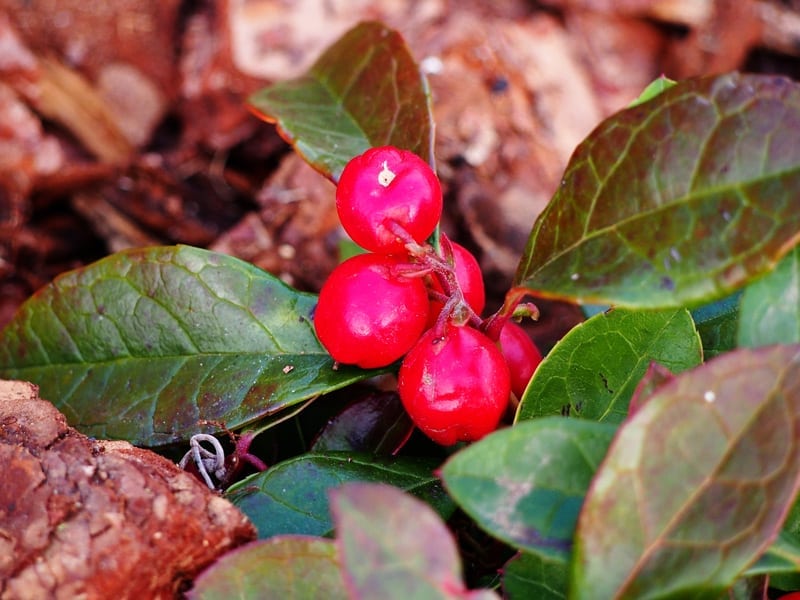
Eastern Teaberry
Also called Wintergreen, this plant is a low-growing ground cover that produces small, bell-like white flowers that are later replaced with bright red berries. Its root tendrils grow underground, so it will form plant colonies as it grows and spreads.
The Eastern Teaberry can tolerate almost any soil or light conditions, but will flower best if given bright, partial sun.
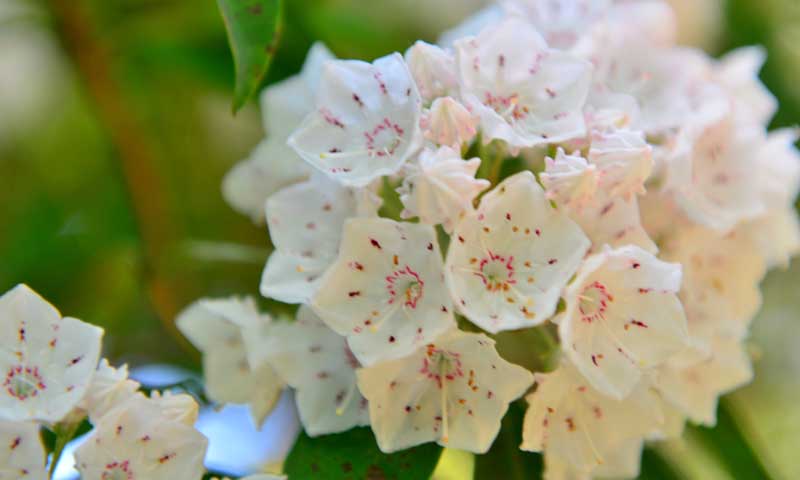
Serviceberry
This small shrub bears white flowers and is an easy keeper. All it needs are a few hours of direct sun, partial shade, and moist soil.
Tasty serviceberry fruit attracts sweet birds, fluttering insects, and hungry humans alike. Its dark red berries have a taste similar to blueberries and almonds.
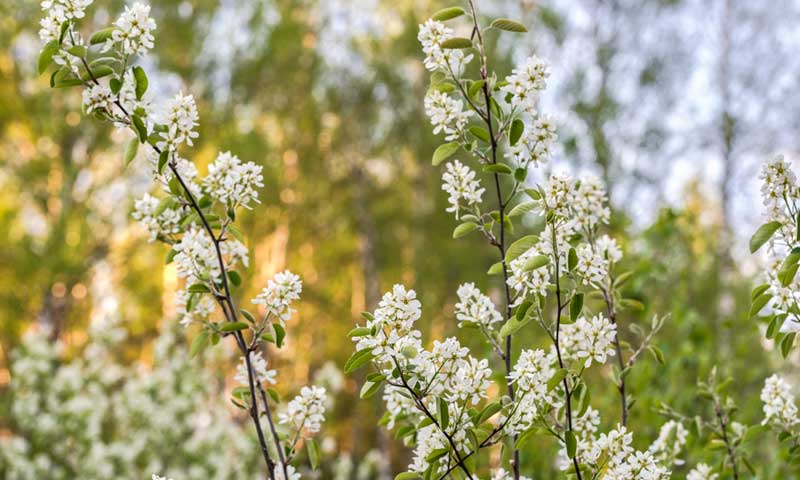
Mountain Laurel
Mountain Laurel is an evergreen shrub with pink and white flowers. It grows slowly in comparison to some of the other plants on this list, but the late-spring blooms are worth it.
Avoid full sun and wet soil. Instead, plant it in a shady spot in your garden.
Trees
These add scale and dimension to a landscape, drawing the eye upward and encouraging the viewer to appreciate the garden as a whole. It is always good to keep in mind how a tree will look throughout the year, whether to choose evergreen or deciduous trees, and how tall a tree may get over the years. With that in mind, these trees can help anchor your landscape while providing beauty all year long.
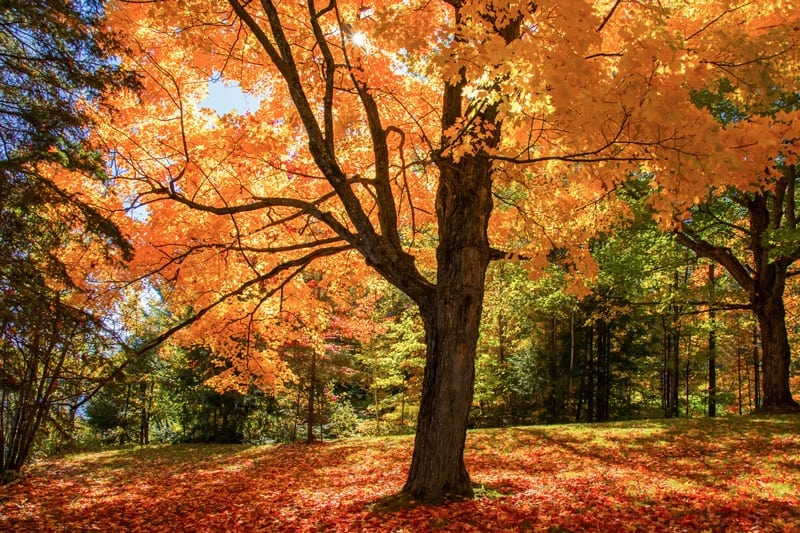
Sugar Maple
A majestic, large tree, the Sugar Maple is probably best-known for its striking red and yellow fall foliage. It can tolerate most soil types, moisture levels, and light conditions, though its leaves can scorch during droughts.
The lovely Sugar Maple is an excellent shade tree that would be a commanding centerpiece in any landscape.
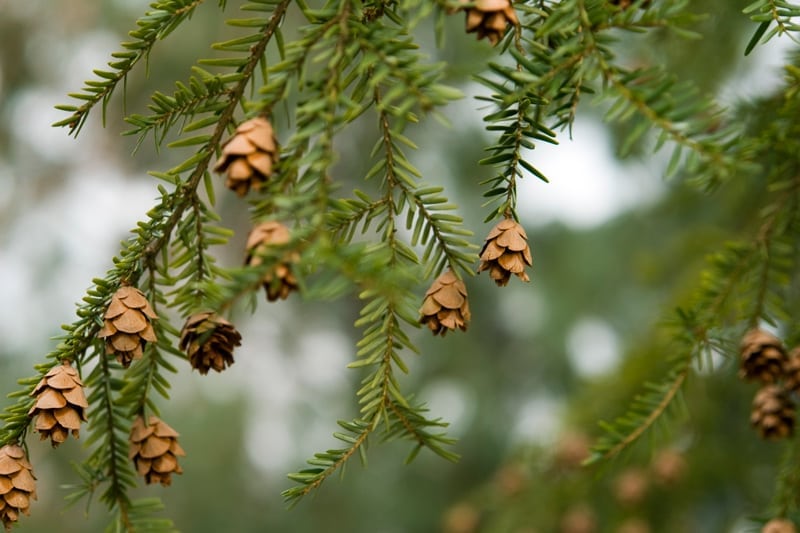
Eastern Hemlock
This coniferous tree features long, sloping branches and tiny, silvery-brown cones. It prefers moist soil, partial shade, and can be shaped into a hedge through consistent pruning if desired.
The Eastern Hemlock tree’s graceful shape and evergreen nature will add color and drama to your landscape design year-round.
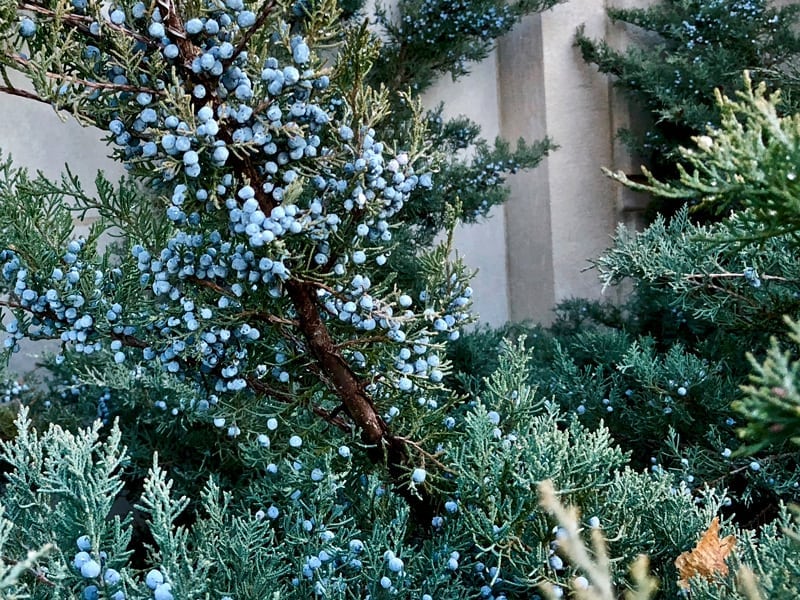
Eastern Red Cedar
A semi-evergreen, this tree can vary in color from silvery-blue-green to dark-green, and the female tree bears small, blue berries. Also known as Virginia Juniper, it can tolerate most extremes of temperature and moisture, from drought to monsoon.
The Eastern Red Cedar can be pruned to develop into tall, slender cones, or allowed to expand into spreading giants in larger landscapes.
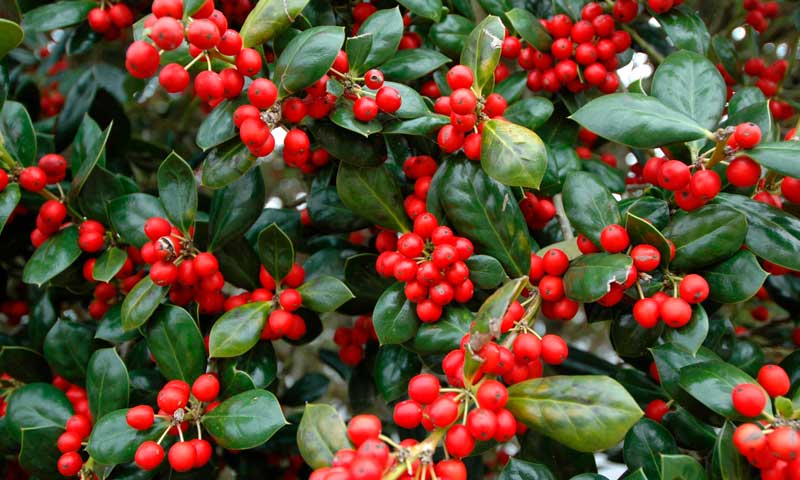
American Holly
Pyramidal in shape and green all year long, American Holly trees will keep your garden beautiful even as your other plants change with the seasons.
The tree thrives best in full sun to partial shade. You’ll only get its signature red berries if there are male and female flowers, so plant multiple.
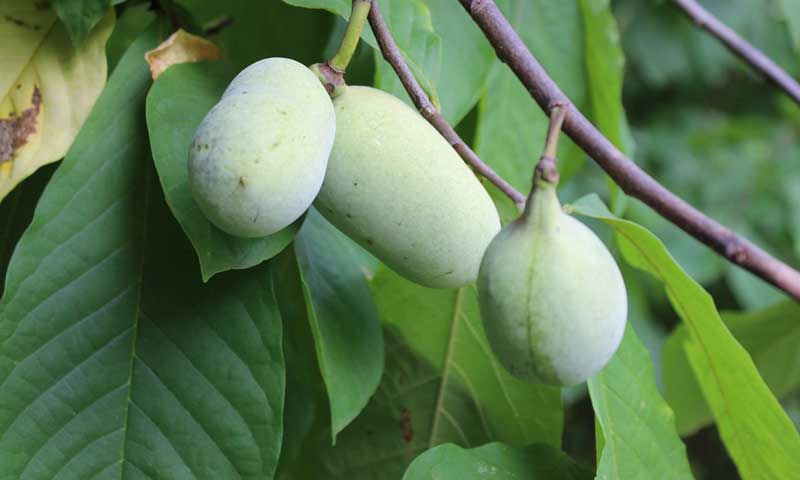
PawPaw
These small, seasonal trees are responsible for producing North America’s largest native fruit. You can eat the fruit right from the tree in the fall.
You’ll need two pawpaws for pollination. It grows best in full sunlight but can be sensitive to harsh sun in its first few years.

